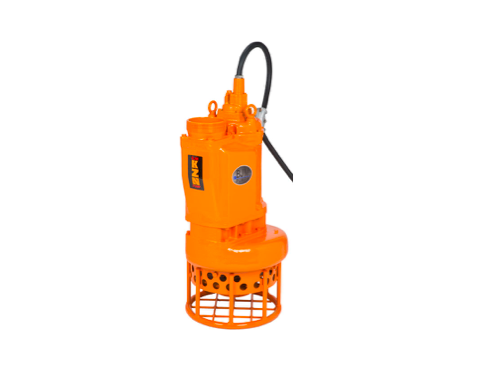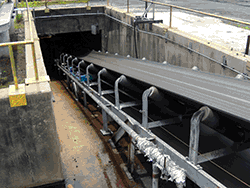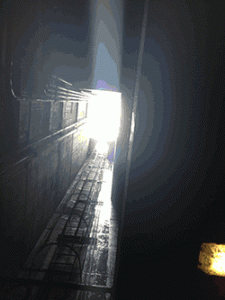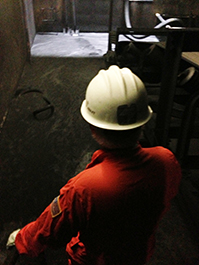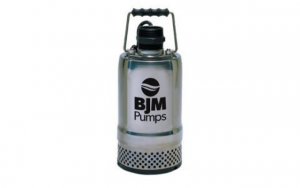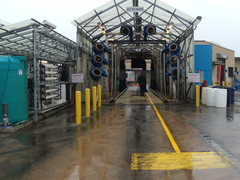With the high price of petroleum, it is important to the bottom-line of U.S. producers to squeeze every dollar out of a barrel of crude oil. Every 42 gallon barrel produces 45 gallons of petroleum products. As you would expect, most of the petroleum is refined into gasoline (47%) followed by Heating Oil/Diesel Fuel (20%) and Jet Fuel (8%). After that, the percentages drop significantly as refiners produce numerous liquid and gas distillates for industry and construction. One of these is Petroleum Coke.
Part of the petroleum refining process is separating distillates from residual oil after it goes through a vacuum distillation unit. These lighter grade petroleum products – hydrocarbon gases, naphtha, light and heavy gas oils, etc. – are separated from the oil in a coker unit. After distilling the desired petroleum by-products, the remaining carbonaceous solid residue is petroleum coke, which has to be cut out of the coker unit by high pressure water.
Petroleum coke (often abbreviated as petcoke), is over 90% carbon, and gives off 5% to 10% more carbon dioxide than coal when burned. Petcoke, depending upon the grade – either high or low in sulfur and metals – is used as inexpensive fuel in offshore power generation, coal fired boilers, or in the steel and aluminum industries. How big is the market? U.S. refineries produced over 61.5 million tons of petcoke in 2011 – enough to fuel 50 average coal plants each year.
Oil refineries usually store petcoke on site awaiting pending sales, or ship it to other companies, who then store in large piles and sell it.
PABTEX, L.P., an affiliate of Kansas City Southern Industries, located in Port Arthur, Texas, is a major bulk commodity handing facility and vessel loading terminal, specializing in exporting petroleum coke which it receives by train from one of several refineries in the area. On their 29 acres of outside storage, PABTEX can store 500,000 tons of material before transferring the petcoke to shipping terminals for transport to global end users.
When the raw petcoke is transported to PABTEX’s terminal in bottom dump railcars, the coke goes to a system of shakers, which breaks the petcoke into smaller chunks that are easier to transport on a conveyer system. However, below the shakers is the open conveyer shaft that goes down 70 to 80 ft. below the ground. Due to the likely hood of rainwater filling up the conveyer shaft, a large sump was sunk into the bottom of the shaft to make sure that water could be pumped out to an existing retention pond. With the shakers directly above the bottom of the conveyer shaft, pieces of petroleum coke fall into the shaft and eventually washed into the sump.
Todd Wilkes, the Maintenance Supervisor of Savage Gulf Services (Savage Gulf Services operates PABTEX’s Port Arthur terminal), had tried several submersible pumps in the conveyer shaft sump application. However, coke is like coal fines when you try to pump it – very abrasive, and easily separating into a slurry. Most submersible pumps, being cast iron, cannot hold up in this very demanding service. Petcoke is too abrasive – and, without an integral agitator, solids settle-out and clog the pump.
Tim Weber, Sales Manager of Saladin Pump, a premier industrial fluid handling distributor in Beaumont, Texas – felt that BJM Pump’s KZN
Series might be the solution for Todd’s problematic sump application. Tim suggested a KZN110H – 15 HP, high head, hard metal agitator slurry pump, manufactured by BJM Pumps.
The KZN Heavy Duty Submersible Slurry Pumps with agitator has been applied to many similar abrasive applications such as lime slurries, mill scale coal runoff sumps, wash down sumps, and ash transfer. Its success can be attributed to two important features.
-
Optimum Wear Resistance – All wetted parts are constructed of abrasive resistant 28% chrome iron (600 Brinell, 57 Rockwell C) for maximum wear life. In addition, a replaceable hardened wear plate is located on the suction side, where erosion would cause a loss of pump performance.
- Maximum Solids Handling Capability – An integral Agitator fluidizes settled solids into a slurry making them easier to pump with less chance of clogging. The semi-open Impeller handles abrasive solid concentrations as high as 70% by weight.
The KZN slurry pump achieves maximum service life because of numerous design features such as:
- Class H motor insulation – and built in amperage ( FLA ) and temperature overload protection.
- Double silicon carbide mechanical seals – in a separate oil filled seal chamber.
- Heavy Duty Lip Seal – additional protection for the mechanical seals.
- Stainless steel shaft and shaft sleeve – maximum wear and corrosion protection.
- Pump volutes cast from hardened Ductile Iron (300 Brinnell hardness), twice as abrasive resistant as standard ductile iron. The walls are extra thick at the point where pumped slurry enters the discharge.
Another key feature of the KZN is its top discharge design. Slurry pumps are considered utility pumps. As such they are frequently dragged from one site to another. Competitive pumps with side discharge connections can break off or be damaged as it is pulled and pushed into place.
Additionally, top discharge pumps, like the KZN are cooled by pumped liquid. The KZN slurry pumps can pump a sump or pit down to within “inches” of the bottom. A side discharge pump, without a cooling jacket, must stay submerged to avoid overheating, leaving as much as 3 feet of un-pumped slurry.
Top discharge also equates to “SLIM” – even the largest model, with a 22.75 inch “waistline”, will fit down a manhole with a hose attached.
Saladin Pump installed a KZN110H in the sump at Salvage Gulf Service for a 60 day trial. The 60 day trial was so successful – with no clogs or wearing issues – that Savage Gulf bought the pump, and 60 days later bought a back-up pump for this very important service.
Pumping reliability is critical to the overall refining process, a fact appreciated by the operational personnel at Savage Gulf Services.

